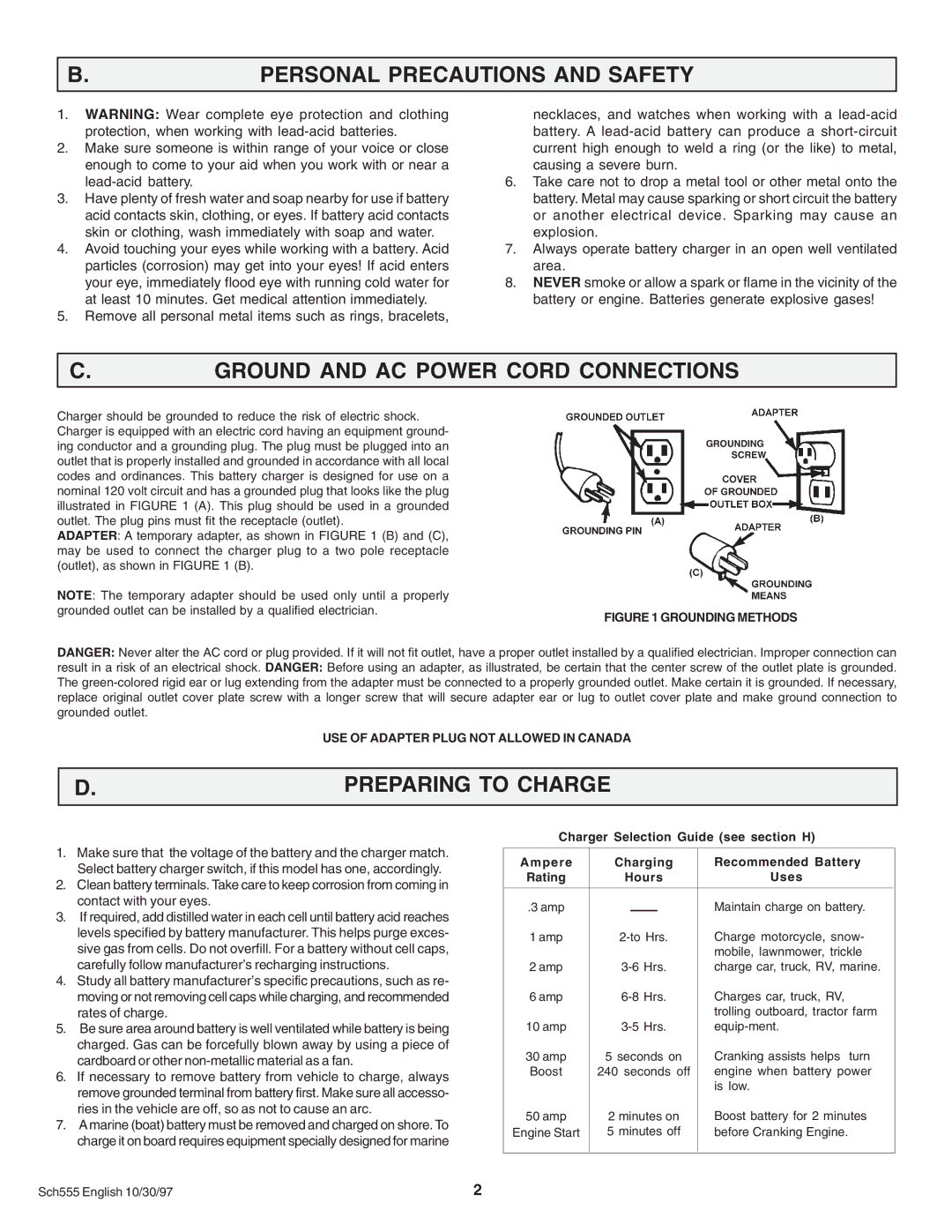MCF-1, SF 1052, SF 1010-2, SF 1012D, SF 1250 specifications
Schumacher is a renowned brand within the automotive and power solutions industry, particularly known for their advanced battery chargers and jump starters. Among their product lineup, the Schumacher SF series stands out, featuring models such as the SF-60, SF 1250, SF 1012D, SF 1010-2, and SF 1052. Each model is designed to meet diverse charging needs while incorporating innovative technology and user-friendly features.The Schumacher SF-60 is a versatile battery charger that supports a range of battery types including AGM, gel, and conventional lead-acid batteries. It features automatic voltage detection and a microprocessor-controlled system, which ensures optimal charging based on the battery’s condition. This model also boasts a built-in safety features including reverse polarity protection and overcharge protection, making it a reliable choice for both professional and personal use.
Moving to the SF 1250, this model further enhances the charging experience with a higher amperage output, allowing for faster charging times. It also includes an LCD display that provides real-time information on voltage, amperage, and charging status. The SF 1250's robust construction and advanced cooling system help prevent overheating, ensuring longevity and performance under various conditions.
The SF 1012D is another impressive model with dual charging options, enabling users to charge two batteries simultaneously. Its compact design does not compromise on functionality, coming equipped with smart charging technology that adapts based on battery type and condition. Moreover, the SF 1012D offers a user-friendly interface with LED indicators for easy operation and monitoring.
The SF 1010-2 model is designed for portability and convenience. Weighing less than most of its competitors, it features an ergonomic handle for easy transport. With a simple plug-and-play operation, even novice users can quickly connect and charge their batteries without technical know-how. This model also includes safety features such as thermal protection, making it a worry-free choice.
Lastly, the SF 1052 combines high performance with accessibility. It features a digital display that provides comprehensive feedback regarding the charging process. Its unique design accommodates a variety of battery types and sizes, making it ideal for everything from cars to motorcycles and even power sport vehicles. The integrated maintenance mode ensures that batteries remain in optimal condition, extending their lifespan.
In conclusion, the Schumacher SF series offers diverse models equipped with innovative features and technologies designed to meet various charging needs. From the compact and user-friendly SF 1010-2 to the robust SF 1250, each model provides reliability, safety, and efficiency, making Schumacher a trusted choice for battery solutions.

